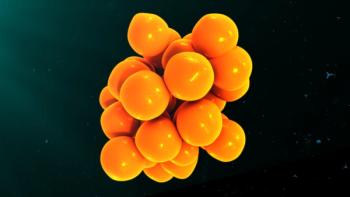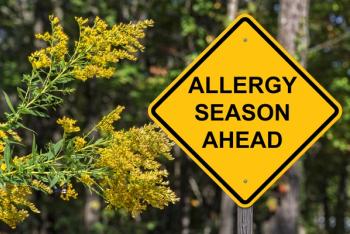
The data follow the FDA approval of omalizumab for the reduction of allergic reactions, including anaphylaxis, that can occur after exposure to 1 or more foods.


The data follow the FDA approval of omalizumab for the reduction of allergic reactions, including anaphylaxis, that can occur after exposure to 1 or more foods.

The results were presented as a late-breaking poster presentation at the American Academy of Allergy, Asthma, and Immunology Annual Meeting.

This marks omalizumab’s fourth FDA-approved indication for allergic and inflammatory conditions, such as severe persistent allergic asthma, with its initial approval being in 2003.

Overtime, children can outgrow food allergies, like milk and eggs—however, children with private insurance are more likely to outgrow allergies than those with public insurance.

The results found that INT301 met both its primary and secondary endpoints and could be a safe and effective option for individuals that experience food allergies.

Language gaps resulted in barriers and underdiagnosing in children with common allergies, limiting support for these patients and their families.

Immune cells in lung cancer are connected to allergic conditions found in eczema and asthma.

Individuals treated with remibrutinib demonstrated symptom control improvement in week 2 of the trial

Peanut sublingual immunotherapy offers a practical treatment option for peanut-allergic toddlers, reducing symptoms in 80% of children.

The designation allows expedited development of ADP101 as a treatment for food allergy in children ages 4 to 17 with confirmed allergy to 1 or more of the 15 foods in the drug product.

Investigators believe that the activation of mast cells drives inflammation and contributes to plaque buildup, causing heart attacks and other damage to the heart.

In addition to language barriers, pharmacy translation software errors may cause further complications when filling patient prescriptions.

The presence of the TPSAB1 gene could help clinicians identify increased food allergies.

Changes in gene expression could ultimately boost the production of inflammatory cytokines.

Contrary to earlier advice, new research suggests introducing infants to potential allergens early may reduce risk of developing allergies to those foods

The study authors note that it is important for expectant mothers to use antibiotics appropriately and when necessary, as well as monitor their child after birth.

Abrocitinib can reduce allergic responses in patients with a peanut allergy by decreasing cytokine activity and maintaining regulatory T cell activation.

Researchers find correlation of increased anaphylaxis with the use of a-tryptase.

With new guidelines surrounding the introduction of peanuts to infants as young as 4 months of age, more work needs to be done to increase awareness among parents and caregivers to prevent peanut allergy at an early age.

Mobile apps can help consumers acquire medications, but few help with adherence beyond automatic refills or medication synchronization.

Although second-generation antihistamines are preferred, patient preference should drive selection of therapy.

Study results indicate that taking these products together reduces the risk of rebound congestion typically seen with intranasal decongestant therapy.

Nonprescription products manage mild to moderate symptoms, but more severe cases need further medical evaluation.

Eye drops come in many forms and for many indications, such as redness, itchiness, dryness, allergies, dilating drops, glaucoma drops, lubricants, numbing agents, antibiotics, and to lower pressure.

Artificial intelligence is allowing researchers to redesign the interaction between the immune system and the protein of an allergen to safely overcome symptoms.